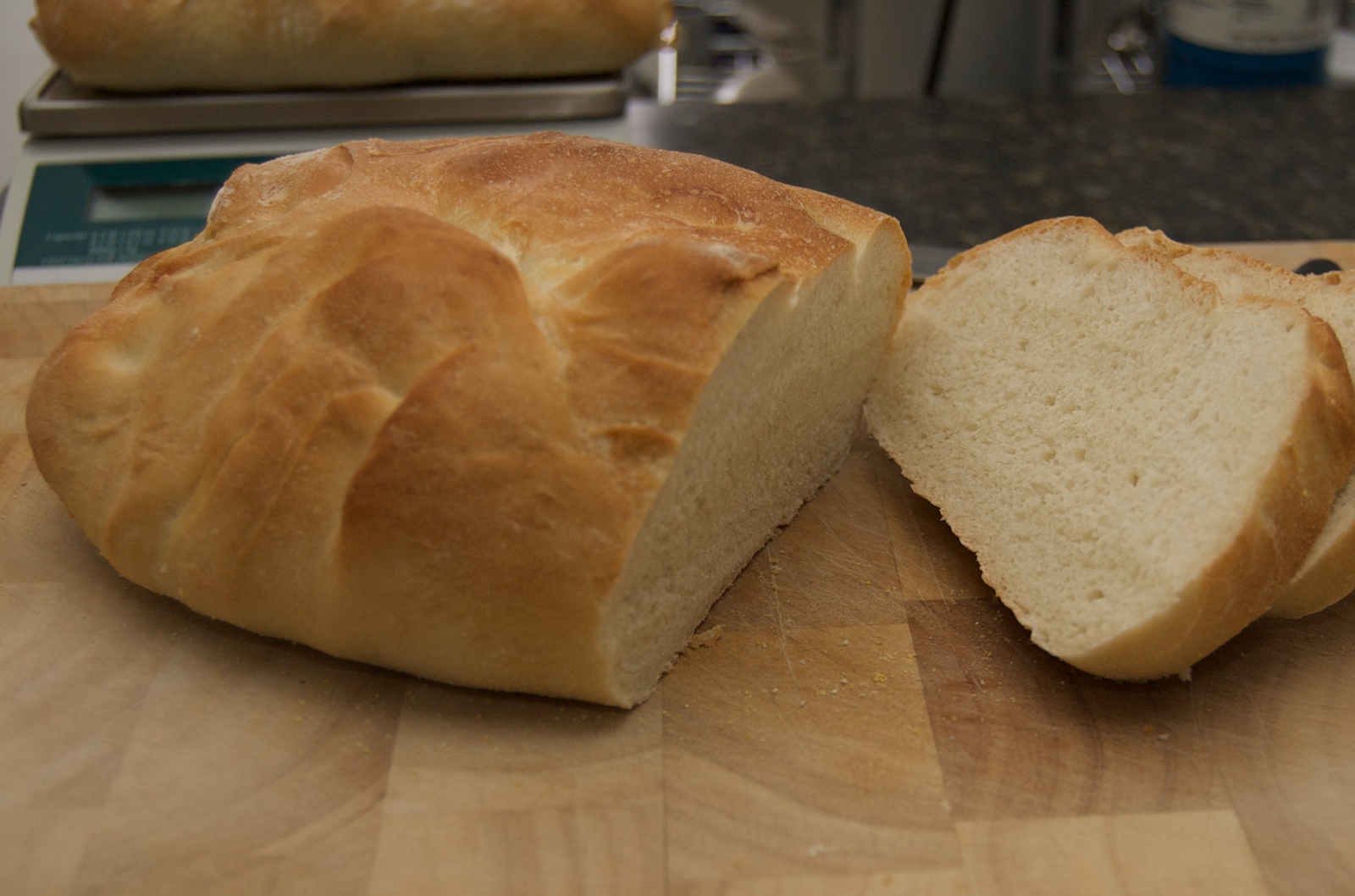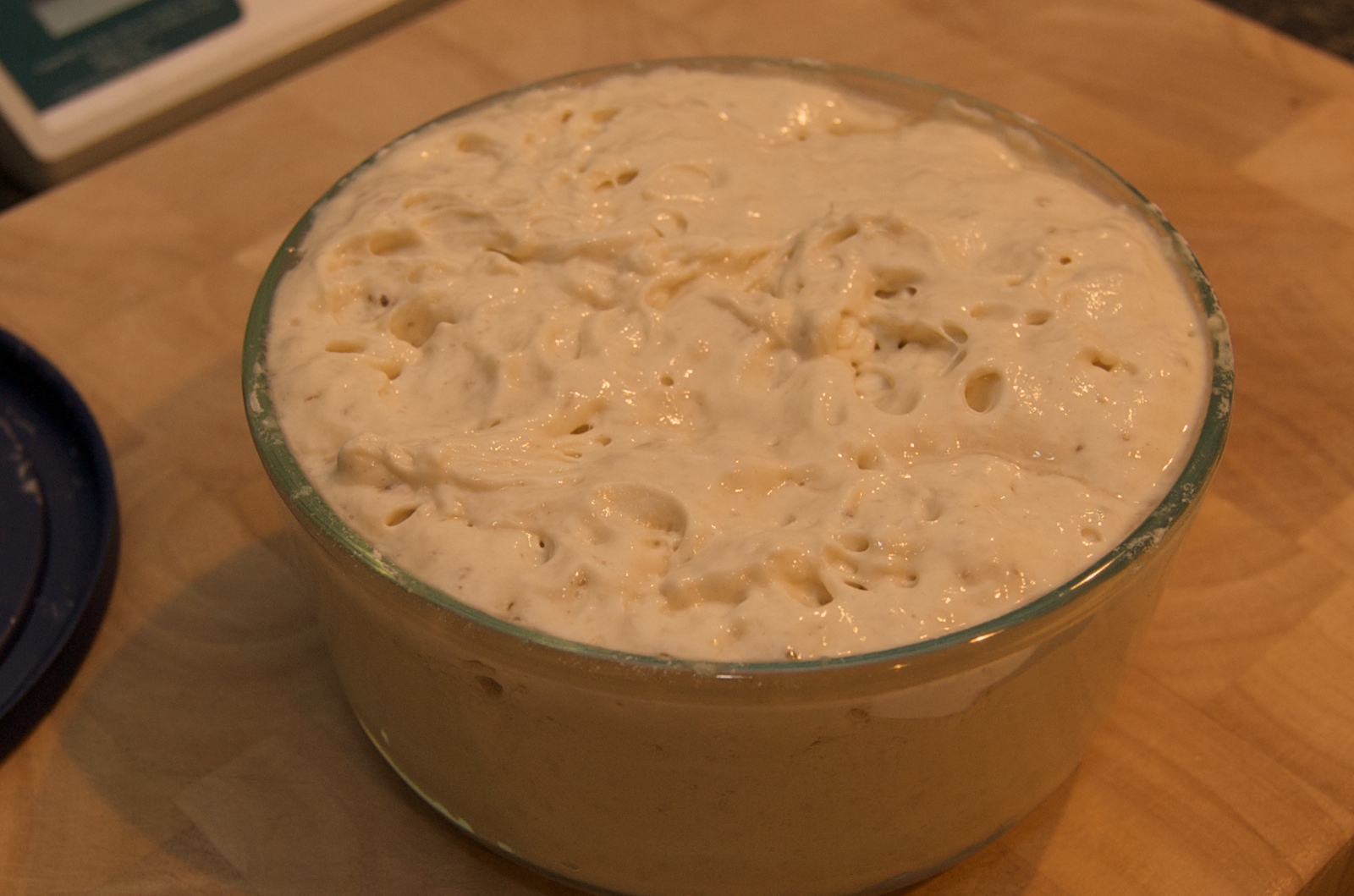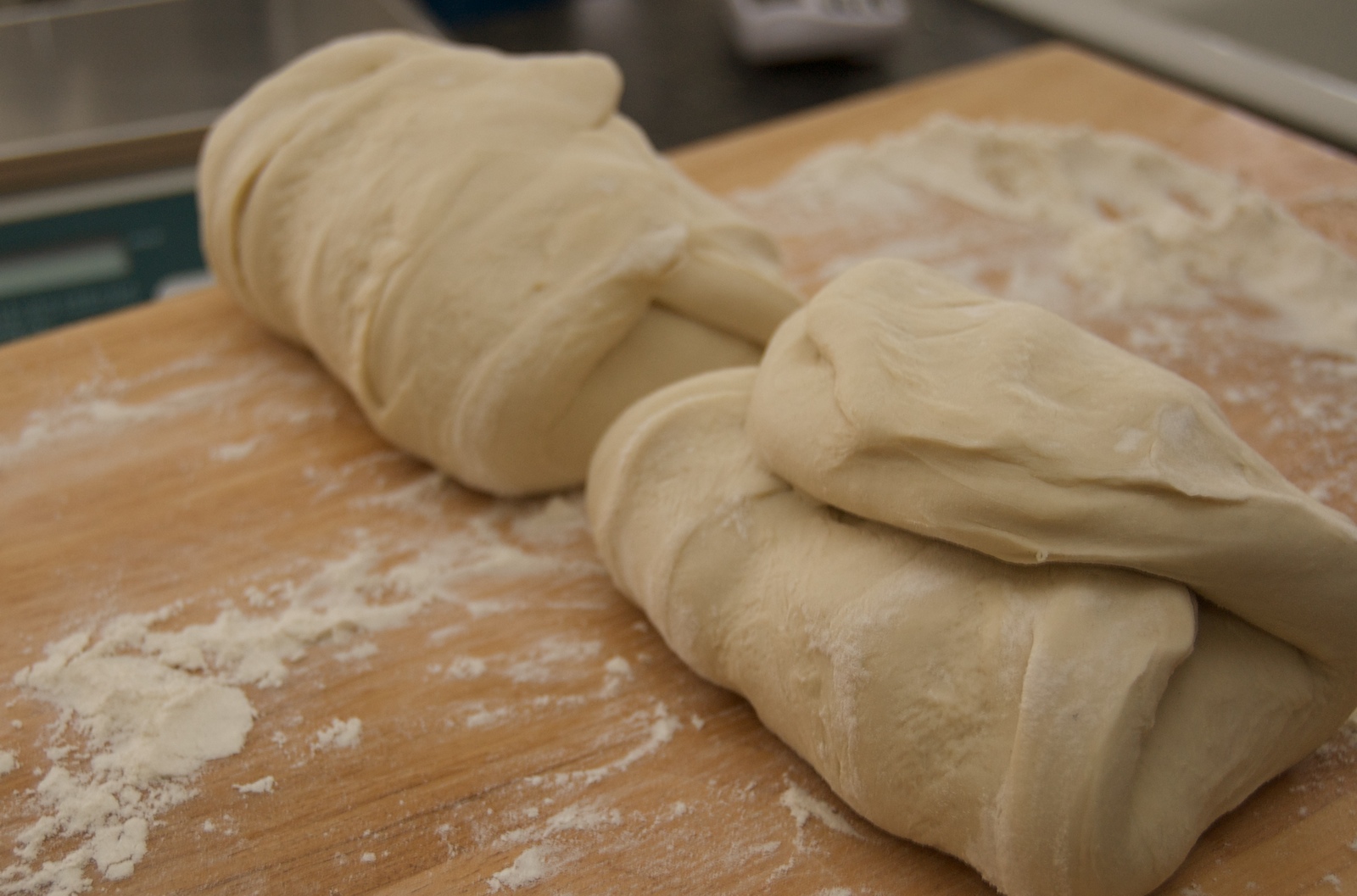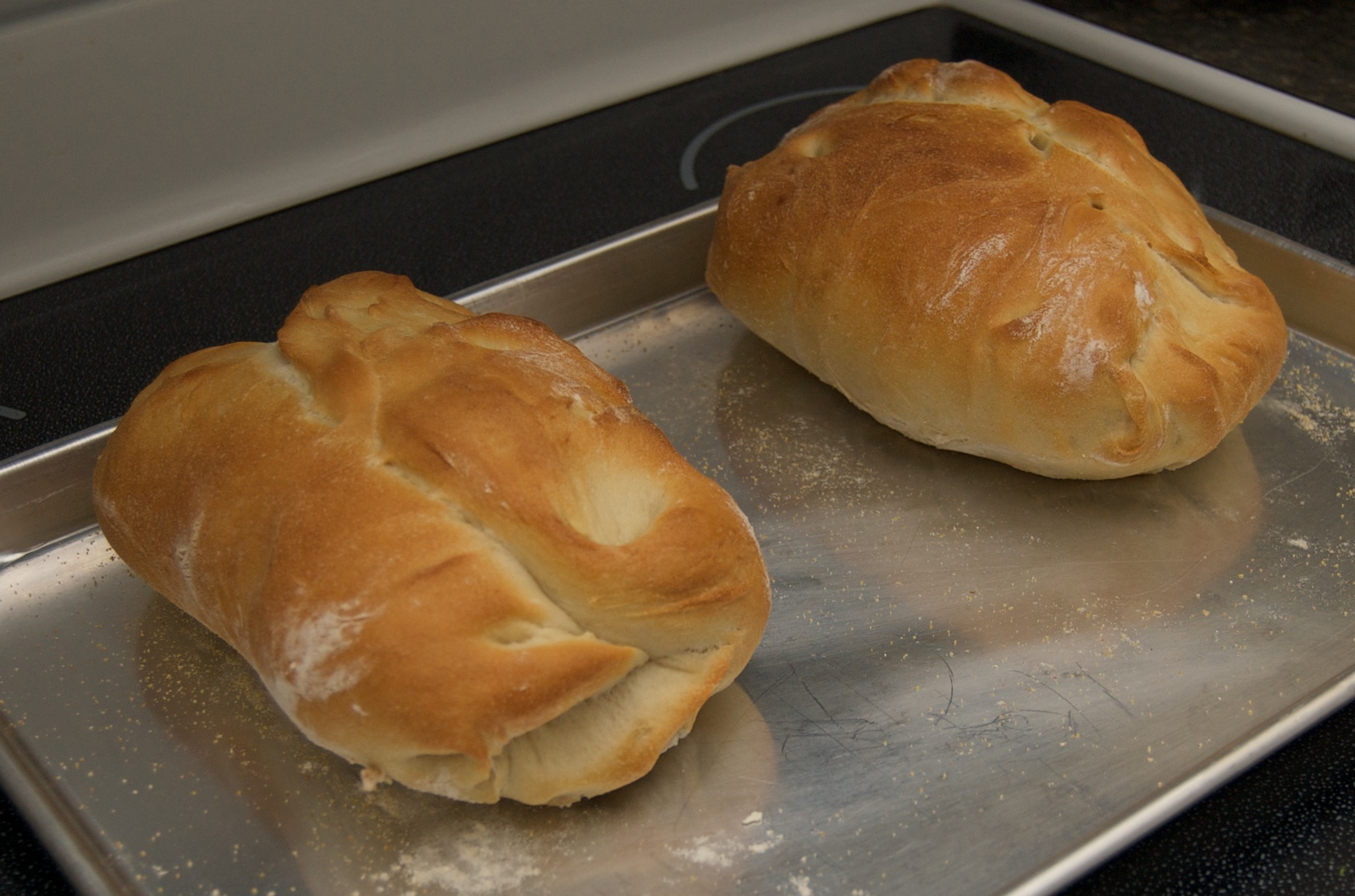Italian Bread
 Ciabatta is one of my favorite kinds of Italian style bread. It's great dipped in olive oil and served with spaghetti, marinara, and Italian sausage. It's crusty on the outside and filled with big holes on the inside, making it light.
Ciabatta is one of my favorite kinds of Italian style bread. It's great dipped in olive oil and served with spaghetti, marinara, and Italian sausage. It's crusty on the outside and filled with big holes on the inside, making it light.
This recipe, however, did not produce ciabatta. It did produce a very delicious white Italian bread that on the outside looked kind of like ciabatta. I'm pretty sure it was my fault for not following the original instructions properly, presumably in the handling the the dough. I think I was overzealous in the stretch part of stretch and fold and compressed out all of the air pockets in the bread. In any case…
I finally succeeded in making this, with Ciabatta #4 !
This is a recipe for delicious Italian bread that may or may not produce ciabatta.
The day before, make the poolish:
11.25 oz. bread flour 12 oz. water, at room temperature 0.03 oz. instant yeast
Combine the ingredients until the flour is hydrated. It should look like thick pancake batter. Lumps are OK.
Loosely cover and let ferment for 3 - 4 hours at room temperature until bubbly.
 Refrigerate overnight.
Refrigerate overnight.
Remove the poolish from the refrigerator 1 hour before you want to begin making the bread.
13.5 oz. unbleached bread flour 0.44 oz. salt 0.17 oz. instant yeast
Stir together the ingredients in the mixer bowl. Add:
22.75 oz. poolish (should be all of what you made, above) 3 oz. water at room temperature (may take as many as 6 oz.)
Mix with the paddle attachment until a good ball of dough forms, then switch the to the dough hook. Knead for 7 minutes.
Divide the dough in half. I got two 1 lb. 3.5 oz. loaves. Form into a rough rectangle. Let rest for 2 minutes.
Grab the short sides of the rectangle and pull so the long side of the rectangle is double its previous length. Then fold the ends into overlapping thirds - letterfold. Sprinkle the top with flour, mist with oil, then cover loosely with plastic. Let rest for 30 minutes.
 Flip the dough over, rotate 90°, the repeat the stretch and fold, stretching the opposite way you did before. Sprinkle the top with flour, mist with oil, then cover loosely with plastic. Let ferment and rise for 90 minutes.
Flip the dough over, rotate 90°, the repeat the stretch and fold, stretching the opposite way you did before. Sprinkle the top with flour, mist with oil, then cover loosely with plastic. Let ferment and rise for 90 minutes.
Flip the dough over, rotate 90°, the repeat the stretch and fold, again. Place the two loaves next to each other, separated by a piece of parchment paper. Sprinkle the top with flour, mist with oil, then cover loosely with plastic. Let ferment and rise for 60 minutes.
Preheat the oven to 500°F. Put a small roasting pan or other suitable steam pan in a rack below the rack where you'll be baking the bread.
Heat a kettle of water. You'll need about a cup of boiling water.
Dust a half sheet pan with cornmeal. Carefully lift each loaf and place it on the sheet pan. A peel or very large spatula dusted with cornmeal helps.
Stretch the dough, if necessary, so the loaf is 9 - 12 inches long.
Put the sheet pan of bread in the oven. Pour about a cup of hot water in the steam pan. Be careful, as hot water may splash out.
Close the oven door and bake for 2 minutes at 500°F. Then lower the heat to 450°F and bake for 8 more minutes.
Rotate the sheet pan 180° and bake for 5 to 10 more minutes, or until the temperature of the center of the bread reaches 205°F.
 This recipe is from The Bread Baker's Apprentice by Peter Reinhart, pp. 136-139, which has significantly more detailed instructions on how to make this bread, and many others. If you follow the directions correctly, I'm pretty confident the result will be ciabatta, as I've had very good luck with the other recipes.
This recipe is from The Bread Baker's Apprentice by Peter Reinhart, pp. 136-139, which has significantly more detailed instructions on how to make this bread, and many others. If you follow the directions correctly, I'm pretty confident the result will be ciabatta, as I've had very good luck with the other recipes.